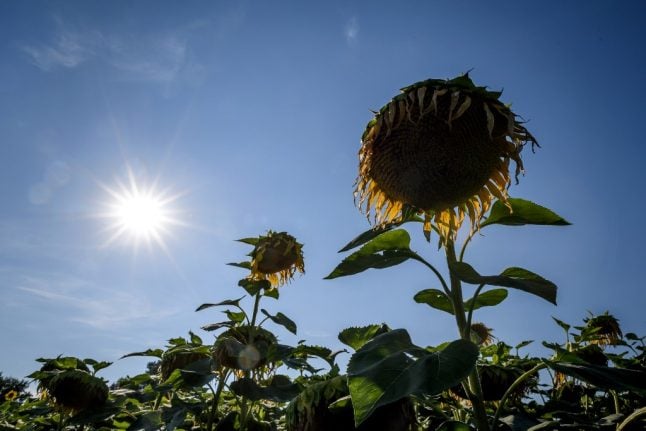When it comes to hot summers in Switzerland, 2003 has become the yardstick. That year as Europe sweltered and thousands of people died across the continent as a result, Switzerland recorded its highest temperature ever of 41.5C in Grono in the canton Graubünden.
But while it could be some time before Switzerland sees a summer like that again, this last summer was not far behind.
Official meteorological figures won’t be released until September 13th, but a new preliminary analysis by Swiss weekly SonntagsZeitung shows Switzerland has just had its third hottest summer on record.

Some Swiss train rails were painted white this summer to prevent buckling in the heat. Photo: AFP
That puts its slightly ahead of the long, hot summer of 2018, which came in fourth place, and 2017 in fifth. The second hottest summer was in 2015.
This means four of the last five Swiss summers have been among the five hottest since records began.
June and July particularly hot
Looking at the summer in more detail, June (an overall national average of 15.3C) and July (an average of 16.2C) were particularly warm. Switzerland had its equally second warmest June ever and its sixth warmest July.
New June temperature records were measured at 50 weather stations, while there were also 15 all-time weather records set during the month. The overall national average was 3.4C above the figure for the period 1981 to 2010. In addition, some mountain peaks saw an average of 5C above the norm for 1981 to 2010.
August 2019 was just the 14th warmest on record, but the average temperature of 15.1C was still 1.5C over that for the period from 1981 to 2010, climatologist Stephan Bader told SonntagsZeitung.
Climate change 'the sum of individual weather events'
Bader stressed that a single extreme event could not be explained as evidence of climate change. But he said 2019 was not a one-off and that the extremely warm summers of the last 20 years, combined with heatwaves, were a sign of climate change.
“With the increasingly warm summers and more frequent heatwaves, the character of the summer climate in Switzerland has changed. The signals of climate changes are therefore the sum of individual weather events,” he said.
READ ALSO: Switzerland boosts green goals with aim to go carbon neutral by 2050




 Please whitelist us to continue reading.
Please whitelist us to continue reading.
Member comments